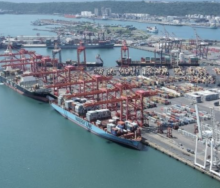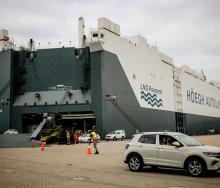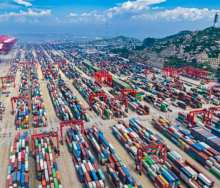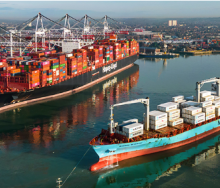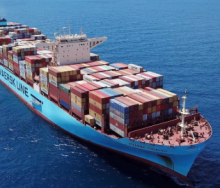Demurrage and Detention (D&D) charges imposed on US shippers by container lines continue to be the most expensive in the world and have increased this year even as global average fees have fallen from the record highs of 2021.
This is according to Container xChange, the world’s leading online platform for the leasing and trading of shipping containers.
Container xChange’s Demurrage & Detention Benchmark 2022 report, released on July 5, ranks the most expensive global ports for D&D charges levied by container lines on customers, two weeks after cargo arrives at the port or is discharged from the vessel.
Even as US regulators have taken a keen interest in container line behaviour amid soaring US inflation and historically high shipping costs, US ports occupy the top five spots in Container xChange’s list of “60 ports ranked by highest to lowest D&D charges across shipping lines”.
New York leads the way followed by the ports of Long Beach, Los Angeles, Oakland and Savannah. All five ports are more than two to three times more expensive than Hong Kong in the seventh spot and at least 20 times more expensive than leading Asian container hubs such as Dalian in China and Busan in Korea.
Under heavy pressure from shipper lobbyists, US President Joe Biden signed the Ocean Shipping Reform Act (Osra) into law on June 16, 2022. Osra gives the Federal Maritime Commission the power to act more assertively on D&D charges and shifts the burden of proof for the reasonableness of fees to ocean carriers instead of shippers.
“Throughout this pandemic, as shipping costs have soared and inflation has become a threat to the US economy, the focus on container line behaviour by politicians and regulators has magnified,” Christian Roeloffs, Container xChange co-founder said.
“US agricultural shippers have been particularly outspoken about their inability to find affordable empty containers for exports. But importers have been equally outraged by what many believe has been profiteering on D&D charges by container lines. Some have started legal actions against carriers.
“This really came into the cross hairs of President Joe Biden this year when he has been highly critical of container lines. His administration addressed D&D in the Ocean Shipping Reform Act and we’re now waiting to see how this will be implemented and whether it will change shipper or carrier behaviour significantly.”
Container xChange’s report notes that global average D&D charges levied by container lines on customers two weeks after the cargo was discharged from the vessel increased by 38% for standard-sized containers from $586 in 2020 to $868 in 2021.
So far in 2022, average D&D charges by major ports have declined by 26% to an average of $664 per container, although fees remain far higher than pre-pandemic at around 12%.
Even so, the US shippers are not benefiting from these global declines in D&D charges. For example, in May 2022 the average charges levied by container lines on customers two weeks after a box was discharged from the vessel at the port of Long Beach was $2 730 per container, up from $2 638 a year earlier. At the port of Los Angeles in May 2022, the average D&D fees increased from $2 594 per container in 2021 to $2 672 per container.
The report notes that D&D charges vary widely by port and carrier.
Of the leading container lines across ports, Cosco currently has the lowest D&D charges while HMM’s D&D fees are the highest.
By region, D&D charges in May in the US were the highest at $2 692 per container. This compared to $549 in Europe, $482 in India, $453 in China, and $366 in the ‘Rest of Asia’.
However, choosing the right carrier for a specific port can significantly impact D&D costs.
For example, notes the report, at Rotterdam in mid-year, average D&D charges at the end of the two-week period were $564 per container. However, shipping with ONE costs $809 per container “which, when compared to the port’s average D&D charges, will escalate your container shipping costs by 43%”.
Many shippers have reported that demurrage charges have been levied despite cargo being buried under stacks of containers at log-jammed ports, rendering them functionally unable to retrieve their containers.
Dr Johannes Schlingmeier, CEO and founder of Container xChange, said using shipper-owned containers (SOCs) instead of shipping line/carrier-owned containers (COCs) could help reduce shipper supply chain costs.
“Taking the SOC options means you’re not leasing a container from the shipping line,” he said. “So, if your container gets held up inside or outside of the terminal, you won’t have to pay late fees to them.”

